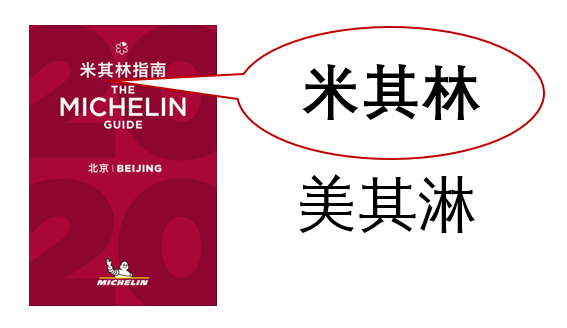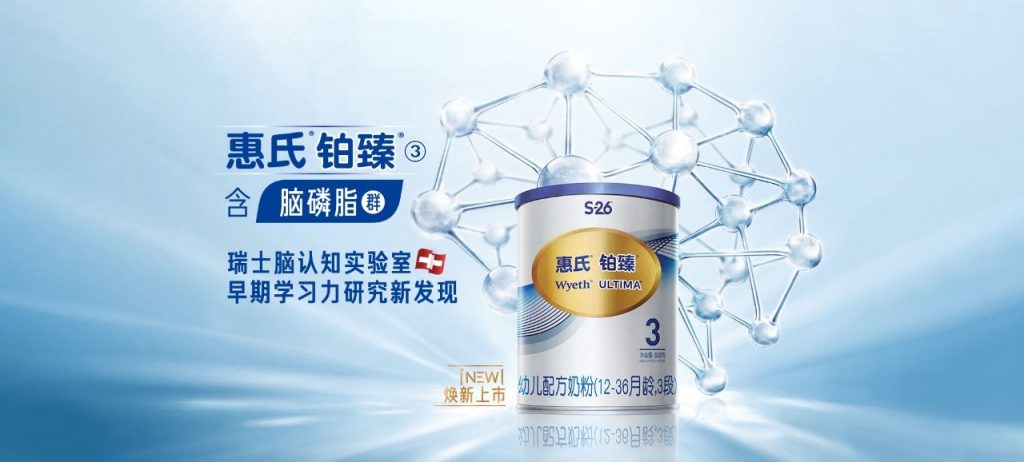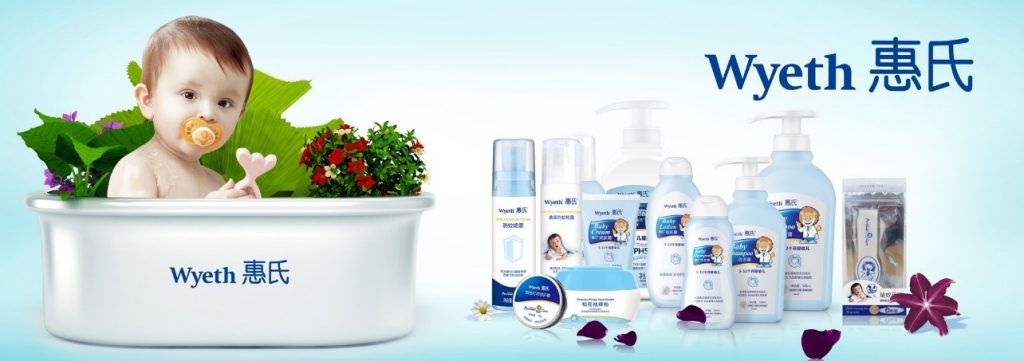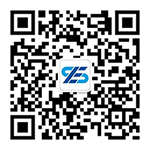With over 200 dedicated professionals, Beijing East IP has helped a full spectrum of clients – from startups to Fortune 500 corporations to domestic multinational companies – on their intellectual property issues in China.
-
Weekly China Trademark News Updates – February 22, 2021
2021-02-22
Weekly China Trademark News Updates
February 22, 2021
1. Burberry obtained its first preliminary injunction order against Baneberry
Burberry Limited (“Burberry”) registered the “BURBERRY,” “
 ,” “
,” “ ,” and “
,” and “ ,” marks on clothing and related goods. Among them, “BURBERRY” and “
,” marks on clothing and related goods. Among them, “BURBERRY” and “ ” marks were recognized as well-known marks multiple times. Xinboli Trading (Shanghai) Co., Ltd. (“Xinboli”) is the licensee of the marks “BANEBERRY” and “
” marks were recognized as well-known marks multiple times. Xinboli Trading (Shanghai) Co., Ltd. (“Xinboli”) is the licensee of the marks “BANEBERRY” and “ ” (“Licensed Marks”).
” (“Licensed Marks”).Xinboli had been using the Licensed Marks and similar marks to Burberry’s marks “
 ” and “
” and “ ” on clothing related goods across all Burberry’s clothing styles, designs, hangtags, purses, and bags, as well as the respective products’ shape. What is more, Xinboli used the royal arms of the United Kingdom (“Royal Arms”) to falsely promote its brand history and sources. Xinboli even opened its own brick and mortar shops or clearance shops in 2019 to sell its goods. Xinboli quickly expanded its sales and extended its coverage. At the time Burberry filed for the preliminary injunction at the end of 2020, Xinboli had opened 40 brick and mortar stores in large shopping malls and outlets in first and second tier cities, almost outmatched Burberry’s brick and mortar stores in mainland China. Xinboli also opened its online stores on TMall.com, WeChat, Pingduoduo, and Little Red Book. Xinboli’s actions caused confusion among the relevant public. Burberry sued Xinboli for trademark infringement and unfair competition. After docketing its case, Burberry filed a petition for preliminary injunction against Xinboli.
” on clothing related goods across all Burberry’s clothing styles, designs, hangtags, purses, and bags, as well as the respective products’ shape. What is more, Xinboli used the royal arms of the United Kingdom (“Royal Arms”) to falsely promote its brand history and sources. Xinboli even opened its own brick and mortar shops or clearance shops in 2019 to sell its goods. Xinboli quickly expanded its sales and extended its coverage. At the time Burberry filed for the preliminary injunction at the end of 2020, Xinboli had opened 40 brick and mortar stores in large shopping malls and outlets in first and second tier cities, almost outmatched Burberry’s brick and mortar stores in mainland China. Xinboli also opened its online stores on TMall.com, WeChat, Pingduoduo, and Little Red Book. Xinboli’s actions caused confusion among the relevant public. Burberry sued Xinboli for trademark infringement and unfair competition. After docketing its case, Burberry filed a petition for preliminary injunction against Xinboli.On January 29, 2021, the Suzhou Intermediate Court held the preliminary injunction hearing. The court ordered Xinboli to immediately stop using the Licensed Marks and immediately stop manufacturing and sell products bearing similar marks to Burberry’s G732879 “
 ” mark and G987322 “
” mark and G987322 “ ” mark; also immediately stop using the “
” mark; also immediately stop using the “ ” Royal Arms logo on the hangtag of all its products and stop all false promotions.
” Royal Arms logo on the hangtag of all its products and stop all false promotions.In reaching its conclusion, the court examined 1) the status and stability of Burberry’s rights, 2) Xinboli’s likelihood of infringement, 3) urgency of Burberry’s petition for preliminary injunction, namely, whether Burberry would suffer irreparable harm unless the injunction is issued, 4) whether impairing the balance between the two parties and issuing the injunction would damage public interests.
Regarding Xinboli’s likelihood of infringement, the court found that Burberry’s “BURBERRY” and “
 ” marks were likely to be recognized as well-known marks. Although the Licensed Marks used by Xinboli were registered for more than 5 years, Burberry’s “BURBERRY” and
” marks were likely to be recognized as well-known marks. Although the Licensed Marks used by Xinboli were registered for more than 5 years, Burberry’s “BURBERRY” and  ” marks were factually well-known prior to the License Marks’ application dates. Considered the Licensed Marks prosecution history, assignments, and actual use, the Licensed Marks shall be seen as bad faith registrations and not limited by the 5-year statute limitation. Moreover, Xinboli’s infringing use were bad faith copying and imitating Burberry’s well-known marks, used a mark similar to the Royal Arms, extensively copied all Burberry’s products, and intentionally copied Burberry’s brand history for false promotional activities. Xinboli’s actions were likely to infringe upon Burberry’s trademark right and amounted unfair competition.
” marks were factually well-known prior to the License Marks’ application dates. Considered the Licensed Marks prosecution history, assignments, and actual use, the Licensed Marks shall be seen as bad faith registrations and not limited by the 5-year statute limitation. Moreover, Xinboli’s infringing use were bad faith copying and imitating Burberry’s well-known marks, used a mark similar to the Royal Arms, extensively copied all Burberry’s products, and intentionally copied Burberry’s brand history for false promotional activities. Xinboli’s actions were likely to infringe upon Burberry’s trademark right and amounted unfair competition.Regarding the urgency of Burberry’s petition for preliminary injunction, namely, whether Burberry would suffer irreparable harm unless the injunction is issued, the court found that first, the scale of the alleged infringing activities was extensive and with high growth rate, while failure to issue the injunction would cause Burberry’s market share to be occupied and suffer irreparable economic harm. Second, the alleged infringing act would highly likely to cause confusion and mistake on the market, while failure to issue the injunction would seriously disparage Burberry’s goodwill and tarnish the significance and distinctiveness of Burberry’s well-known marks. Last, sales for the Chinese New Year’s holiday was approaching, which made it factually urgent to issue an injunction against the alleged infringing activities.
2. The Supreme People’s Procuratorate released the 26th batch of Guiding Cases of the Supreme People’s Procuratorate
On February 8, the Supreme People’s Procuratorate released the 26th batch of the Guiding Cases of the Supreme People’s Procuratorate. We handpicked the following to share with our readers.
a. Selling counterfeit products bearing registered Starbucks trademarks
Between May 2017 and January 2019, defendant Qiucheng Deng knowingly purchased counterfeit instant coffee bearing “XING BA KE in Chinese (星巴克)” and “STARBUCKS VIA” trademarks from Hong Kong with below-the-market price and sold some 21,304 products to defendant Shuangshan Food (Xiamen) Co., Ltd. (“Shuangshan”) for RMB 3.83 million (USD 592,000). Qiucheng Deng knew that its company Bai Yi Co., Ltd. did not have authorization from Starbucks Corporation but forged an authorization letter to authorized Shuangshan for sale of counterfeit Starbucks instant coffee. During the said period, the defendants used the forged authorization letter to sell 19,264 counterfeit Starbucks instant coffee to more than 50 shops in Wuxi, Hangzhou, Shantou, Wulumuqi, and 18 other provinces for RMB 7.24 million (USD 1.12 million).
On September 26, 2019, People’s Procuratorate of Xinwu District, Wuxi City, Jiangsu Province (“Xinwu Dist. Procuratorate”) prosecuted the defendants for selling counterfeit products. On December 6, 2019, Xinwu Dist. The court rendered first instance decision which ordered defendant Shuangshan to pay a fine of RMB 3.2 million (USD495,000) and sentenced defendants Qiucheng Deng and 4 others to jail-terms between 21 months and 5 years.
Consider numerous public consumers’ interests and public interests were damaged, the Wuxi Consumer Protection Commission initiated a civil public interest lawsuit sua sponte claiming treble punitive damages. The Wuxi Intermediate Court docketed the case on September 18, 2020.
b. Forging “CISCO,” “HP,” and “HUAWEI” trademarks
Between 2015 and April 2019, defendant Changlong Yao arranged defendant Jin Gu to purchase printers, labels, and fiber optic transceiver module for forging “CISCO,” “HP,” and “HUAWEI” fiber optic transceiver module products and arranged defendant Zihao Wei and two other people for selling abroad. Defendants Changlong Yao and Jin Gu manufactured and sold more than 100,000 pieces of the said forged fiber optic transceiver module for RMB 31.6 million (USD 4.88 million). 11,975 pieces of counterfeit fiber optic transceiver module and switches were seized on site, worth more than RMB 3.83 million (USD 592,000). The sales amount of Zihao Wei and two others were about RMB 7.45 million (USD 1.15 million), RMB 4.29 million (USD 663,000), and RMB 3.52 million (USD 544,000) respectively.
On September 6, 2019, People’s Procuratorate of Donggang District, Rizhao City, Shandong (Donggang Dist. Procuratorate) prosecuted the defendants before the Donggang Court. On December 12, 2019, the Donggang Court rendered the first instance decision and sentenced defendants Changlong Yao and four others for jail-terms between 26 months and 4 years. Changlong Yao was fined for RMB 5 million (USD 773,000) and the rest of the defendants were fined for an amount between RMB 140,000 to 250,000 (USD 21,600 to 38,600). The decision has come into effect.
Selling counterfeit products in or out of mainland China without authorization from the registered trademark owner in China violates China’s trademark law and regulations, infringes upon the registered trademark owner’s exclusive trademark right, damages goods goodwill, and constitutes a crime where the circumstances are serious.

Follow us on LinkedIn
Email: trademark@beijingeastip.com
Tel: +86 10 8518 9318 | Fax: +86 10 8518 9338
Address: Suite 1601, Tower E2, Oriental Plaza, 1 East Chang An Ave.,
Dongcheng Dist., Beijing, 100738, P.R. China -
Weekly China Trademark News Updates – February 8, 2021
2021-02-08
Weekly China Trademark News Updates
February 8, 2021
1. BP’s Helio logo recognized as a well-known mark against China Fuel
BP P.L.C. (“BP”) appealed the unfavorable decision of an invalidation petition ruled by the CNIPA regarding the sunflower design mark owned by China National Fuel Group Co., Ltd. (“China Fuel”) in Class 4 with Reg. No. 7916482 (“Disputed Mark”). On the appeal, the Beijing Intellectual Property (“IP”) Court held that BP’s cited mark shall be recognized as a well-known mark on industrial oil, greases, fuel, and other related goods. The Disputed Mark constituted as an imitation of BP’s prior mark and shall be invalidated.
BP’s Cited Mark 1
BP’s Cited Mark 2
China Fuel’s Disputed Mark



In its ruling, the Beijing IP Court concluded that BP’s evidence supported its petition recognizing BP’s registered trademarks (Reg. Nos. G763249 and G744047) (“Cited Marks”) as well-known marks on industrial oil, greases, fuel, and other related goods before the Disputed Mark’s application date. The court found that 1) the composition, design, and overall appearances between the Cited Marks and the Disputed Mark were similar, 2) China Fuel adopted the gradian style design found on the Cited Marks onto the Disputed Mark in actual use, which can be regarded as intentionally causing confusion, and 3) China Fuel situated in the same industry as BP and should have known about the fame of the Cited Marks but China Fuel failed to refrain from using a similar mark. Accordingly, the Disputed Mark was an imitation of the Cited Marks. The Disputed Mark’s use on fuel and gas related goods were highly similar or closely associated with the goods that made the Cited Marks well-known. The Disputed Mark’s registration and use was likely to cause confusion to the public and damage BP’s interest.
2. Peppa pig energy saving desk lamp ruled as trademark infringement
Entertainment One UK Limited (“Entertainment One”) sued Shanghai Xunmeng Information Technology Co., Ltd. (“Shanghai Xunmeng”) for infringing its exclusive trademark right by selling “Peppa pig energy saving desk lamp” on Pinduoduo e-commerce platform before the Shanghai IP Court.
Peppa Pig Energy Saving Desk Lamp

The Shanghai IP Court found that Entertainment One’s “Xiao Zhu Pei Qi (Peppa pig in Chinese)” trademark in Class 9 for “computer game software (recorded), and electronic publication (downloadable)” related goods has enjoyed relatively high fame and goodwill through continuously promoting and using the mark on animations and electronic publication goods. The “Xiao Zhu Pei Qi (Peppa pig in Chinese)” trademark shall be recognized as a well-known mark. The packaging of “Xiao Zhu Pei Qi (Peppa pig in Chinese)” desk lamp sold by Shanghai Xunmeng imitated and copied the “Xiao Zhu Pei Qi (Peppa pig in Chinese)” trademark owned by Entertainment One, which was likely to mistake the public, infringed upon Entertainment One’s exclusive trademark right, and damage its interest.
3. Paris Baguette in Chinese (巴黎贝甜) recognized as unregistered well-known mark
Ai Si Bi Xi Investment Co., Ltd. (ASBX) is the operator of the famous bakery “Paris Baguette” or “Paris Baguette in Chinese (巴黎贝甜).” ASBX sued Beijing Bali Beitian Enterprise Management Co., Ltd. (“Beijing Beitian”) in the Beijing Intellectual Property (“IP”) Court for infringing its unregistered well-known mark right by registering numerous “Ba Li Bei Tian in Chinese (芭黎贝甜)” marks and promoting the marks “Paris Baguette” and “Paris Baguette in Chinese (巴黎贝甜)” on Beijing Beitian’s website.
Cited Marks Disputed Marks 



The Beijing IP Court found that ASBX’s evidence supported its petition to recognize the marks “Paris Baguette” and “Paris Baguette in Chinese (巴黎贝甜)” reached well-known status among relevant consumers as unregistered well-known marks. Beijing Beitian used “Paris Baguette in Chinese (巴黎贝甜)” prominently on its WeChat public account and website caused relevant public associated “Paris Baguette in Chinese (巴黎贝甜)” with Beijing Beitian. Such use was sufficient to mistake the source of services and infringed upon ASBX’s interests on the unregistered well-known marks “Paris Baguette” and “Paris Baguette in Chinese (巴黎贝甜).” Meanwhile, ASBX’s unregistered marks “Paris Baguette” and “Paris Baguette in Chinese (巴黎贝甜)” had relative high fame when Beijing Beitian was established. Under such circumstance, Beijing Beitian’s registration and use of the mark “Ba Li Bei Tian in Chinese (芭黎贝甜),” that was highly similar to the unregistered mark “Ba Li Bei Tian in Chinese (巴黎贝甜),” as its trade name was likely to cause confusion among the relevant public and violated the Chinese Anti-unfair Competition Law. The Beijing IP Court ordered Beijing Beitian to immediately stop any infringing activities and pay damages and reasonable legal costs of RMB 1.5 million (USD 231,600).
4. Building a high-standard market system and strengthening intellectual property protection
The General Office of the Communist Party Central Committee of China and the General Office of the State Council have issued the “Action Plan for Building a High-Standard Market System,” which calls for strengthening intellectual property rights protection. According to this action plan, it will formulate and promulgate judicial interpretations on several issues concerning the applicable law of punitive damages for intellectual property infringement, and strictly implement the punitive compensation system for infringements against malicious infringement, long-term and continuous infringement, and trademark infringement.
This action plan also aims to promote formulation and revision of local regulations such as trademark agency management measures, geographical indication product protection regulations, and official mark protection measures. Research and formulate rules for the protection of intellectual property rights in the field of pharmaceutical patent protection, cross-border e-commerce intellectual property protection regulations, and publish guidelines for corporate intellectual property protection and country-specific guidelines for intellectual property protection.
Finally, the action plan aims to optimize the application and examination procedures for patents and trademarks, improve examination efficiency, and reduce examination time. Establish and improve the evaluation and management system of intangible assets such as patents and trademarks.

Follow us on LinkedIn
Email: trademark@beijingeastip.com
Tel: +86 10 8518 9318 | Fax: +86 10 8518 9338
Address: Suite 1601, Tower E2, Oriental Plaza, 1 East Chang An Ave.,
Dongcheng Dist., Beijing, 100738, P.R. China -
Weekly China Trademark News Updates – February 1, 2021
2021-02-01
Weekly China Trademark News Updates
February 1, 2021
1. The CNIPA published 2020 Annual Trademark Statistics
In 2020, 5.76 million marks were registered from applicants worldwide. Although 2020 was hit by the pandemic, domestic applicants managed to file 7,553 trademark applications under the Madrid Protocol before the CNIPA.
With a striking 64.7% year-on-year growth, the CNIPA closed 149,000 trademark oppositions. Among them, 55,079 cases were allowed for registration, 38,988 cases were refused for registration, and 9,176 cases were partially allowed for registration.
358,000 other trademark adjudication cases (including rejection appeals, registration refusal appeals, invalidation actions, non-use cancellation appeals, etc.) were closed, achieving a 7.8% year-on-year growth. Among them, the success rate for refusal appeal was 33.2%, the success rate for invalidation was 70.4%.
The average trademark examination time had been shortened to 4 months.
Since 2019, the CNIPA has been organizing and executing the “Blue Sky” Special Initiative among IP agencies nationwide to further strengthen supervision on questionable agencies and enhancing the continued healthy development. By 2020, 2,950 agencies have been interviewed and 1,095 were ordered of rectification, 23,000 agencies have completed self-inspection and made credit commitment.
2. Kinder Surprise Egg affirmed as goods packaging decorations of certain influences, Ferrero received RMB700,000 (USD108,000) in damages
Soremartec SA, Ferrero SpA., and Ferrero Trading (Shanghai) Co., Ltd.t (“Ferrero”) sued Chaozhou City Chaoya Distrct Yaliwen Food Factory (“Yaliwen”) for trademark infringement and anti-unfair competition claiming RMB 1 million (USD 154,750) in damages.
The second instance court held that Yaliwen’s infringing products were similar to Ferrero’s registered trademarks and used on identical goods, which were likely to cause confusion to the relevant public and infringed upon Ferrero’s trademark rights. Meanwhile, the overall appearance of the infringing products was similar to Kinder Surprise Egg’ packaging and decoration, which was likely to cause confusion to the relevant public on the source of goods and amounted to unfair competition.
Kinder Surprise Egg

Infringing goods samples

In finding trademark infringement, the second instance court reasoned that overall appearances or the various compositions as used on every infringing products were likely to cause confusion and were similar to Ferrero’s registered trademarks. In particular, the egg-shaped products, the words’ compositions, the wave design separating the overall designs, and the milk drop design were all similar to the composition and arrangements of various elements found in Ferrero’s registered trademarks. The second instance court concluded that consider Ferrero trademarks’ distinctiveness and fame, use of the alleged infringing trademarks were likely to confuse or mistake the relevant public as to the sources of goods and constituted as trademark infringement.
Regarding whether the packaging and decoration of the Kinder Surprise Egg has certain influence, the second instance court found that it does. First, Ferrero’s evidence proved that A) the Kinder Surprise Egg have been recognized and protected as a famous product multiple times. B) The Kinder Surprise Egg has been in the market since 2011 and became available nationwide with vast amount of advertising expenses and countless promotions. C) Combining its lengths and number of sales, time and level of promotion, Kinder Surprise Egg should be recognized as famous in the market and known by the relevant public in the mainland China market. Second, the packaging and decoration used on the words, colors, graphical design, and composition were uniquely designed, which embodied distinctive characteristics and allowed consumers to distinguish the source of goods. Accordingly, Kinder Surprise Egg’s packaging and decoration shall be considered as a protected product packaging and decoration that has certain influence under the Chinese Anti-unfair Competition Law.
3. World Trade Centers obtained 3 million (USD 464,300) in damages for others using WTC as real estate names
The World Trade Centers Association (“WTCA”) alleged that the naming of the disputed real estate as “Taizhou World Trade Center in Chinese (台州世贸中心)” by Taizhou World Trade Company (“TWTC”), and TWTC’s promotion of that building as the “World Trade Center in Chinese (世贸中心)” with Dongsen Holdings and Dongsen Real Estate Company (“Dongsen”) infringed its trademark right and amounted to unfair competition. The WTCA petitioned the court for RMB 3 million (USD 464,302) in economic loss and reasonable legal costs.
Taizhou World Trade Center in Chinese (台州世贸中心)

In its findings for trademark infringement, the court found that the WTCA registered the “WTC,” “WORLD TRADE CENTER,” and other related trademarks for services in Class 41. Not only have these trademarks been primarily used for conferences and exhibitions, but they have also been specially licensed to be used to name the relevant real estate the “World Trade Center in Chinese (世贸中心)” for promotional purposes. Meanwhile, relevant public also learned about WTCA’s registered trademarks through these real estates. The purpose for TWTC to name its real estate as “Taizhou World Trade Center in Chinese” and to use marks “WTC,” “World Trade Center in Chinese (世贸中心),” and “WORLD TRADE CENTER” in its promotional materials were to invite businesses or increase sales volume. Such use overlapped with the purpose of the services designed under the WTCA’s registered trademarks. In addition, TWTC’s scope of business and the disputed real estate’s functions also include exhibition services, which overlapped with WTCA’s services. Thus, the approved services of the WTCA’s registered trademarks and the services where TWTC used its marks constituted as similar. Moreover, TWTC knew of the fame of the WTCA’s registered trademarks but still used identical or similar marks, which demonstrated obviously bad faith in free riding the WTCA’s fame. Accordingly, TWTC’s infringed upon WTCA’s exclusive trademark rights when TWTC used marks identical or similar to WTCA’s registered trademarks on the disputed real estate and on promotional materials without authorization, and when TWTC registered and used the domain name “www.tzwtc.com.”
4. Tongji Vientiane City was ordered to pay China Resources Vientiane City RMB 1 million (USD 154,750) in damages
“Wan Xiang Cheng in Chinese (万象城)” and “themixc + Wan Xiang Cheng in Chinese (萬象城)” were famous real estate brands owned by the China Resources Group (“CRG”). Upon finding a real estate named “Tong Ji Wan Xiang Cheng in Chinese (同济万象城),” CRG sued the real estate owner for trademark infringement and petitioned for RMB 5 million (USD 773,800) for damages and reasonable legal costs.
Tong Ji Wan Xiang Cheng in Chinese (同济万象城)

Wan Xiang Cheng in Chinese (萬象城)
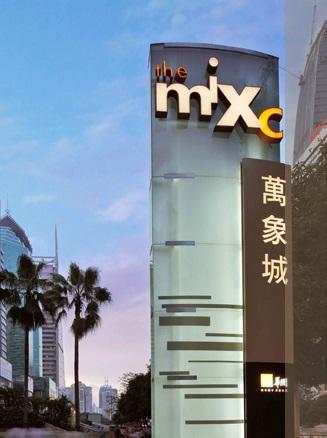
The court found that “Tong Ji Wan Xiang Cheng in Chinese (同济万象城)” was similar to the “Wan Xiang Cheng in Chinese (万象城)” series trademarks owned by CRG, and Tongji Real Estate Company (“Tongji Real Estate”), owner of the dispute real estate, infringed upon CRG’s exclusive trademark rights. Although Tongji Real Estate claimed that it had used “Wan Xiang Cheng in Chinese (万象城)” in 2009 and 2011 for other construction projections that were earlier than the filing date of CRG’s “Wan Xiang Cheng in Chinese (万象城)” and “themixc+ Wan Xiang Cheng in Chinese (萬象城)” trademarks, and constituted as prior use. The court reasoned that CRG began using the “Wan Xiang Cheng in Chinese (万象城)” trademark in 2004 for its real estate project in Shenzhen. Therefore, Tongji Real Estate’s claim cannot be supported.
The first instance court ordered Tongji Real Estate to immediately stop all infringing activities and pay economic loss of RMB 1 million (USD 154,750). The second instance court affirmed.

Email: trademark@beijingeastip.com
Tel: +86 10 8518 9318 | Fax: +86 10 8518 9338
Address: Suite 1601, Tower E2, Oriental Plaza, 1 East Chang An Ave., Dongcheng Dist., Beijing, China 100738 -
Weekly China Trademark News Updates – January 25, 2021
2021-01-25
Weekly China Trademark News Updates
January 25, 2021
1. RMB 76.4 million (USD 11.8 million) damages ordered against Amazon
Beijing Yanhuang Yingdong Technology Development Co., Ltd. (“Yanhuang”) sued Amazon.com, Inc.’s Chinese subsidiary, Amazon Connect Technology Services (Beijing) Co., Ltd. and a Chinese data center and cloud technology provider, Beijing Sinnet Technology Co., Ltd. (“Sinnet”) (together as the “Defendants”) before the Beijing High Court for infringing its registered trademark “AWS,” which may cause confusion to the relevant public as to the source of goods or services. The Beijing High Court held that the Defendants were jointly liable for trademark infringement. The Defendants shall immediately stop using the “AWS” mark, pay Yanhuang RMB 76.4 million (USD 11.8 million) for economic loss, reasonable legal costs of RMB 260,000 (USD 40,000), and publish a public statement to eliminate any impact caused by their
Parts of the allegedly infringing marks Yanhuang’s registered trademarks 



In determining the damages, the Beijing High Court referenced Sinnet’s 2017 Annual Report that states the profit for “cloud computing and related services” was RMB 764 million (USD 118 million). The court also accounted for the allegedly infringing marks’ contribution to all the Defendants’ operation profit margin. Together, the court determined a 5% profit (RMB 38.2 million (USD 5.9 million)) as the base of the damages to be ordered. Upon considering the Defendants knew of Yanhuang’s registered trademarks “AWS” but still chose to infringe upon Yanhuang’s exclusive trademark rights and filed jurisdiction challenge in bad faith, the court doubled the 5% profit base and ordered the Defendants to pay a punitive damage of RMB 76.4 million (USD 11.8 million).
2. “MICHELIN” successfully invalidated “MEI QI LIN in Chinese (“美其淋”)
The Beijing High Court held, in its final judgment for this case, that the mark “MEI QI LIN in Chinese (美其淋)” Reg. No. 12963409 in Class 32 (“Disputed Mark”) for beer, juice, soda, soy drink, and other goods filed by Anhui Haozhou City Sihai Pharmaceutical Co., Ltd. (“Sihai Pharmaceutical”) infringed upon the exclusive trademark right of the well-known mark “MICHELIN” Reg. No. 136402 in Class 12 owned by Compagnie Générale des Etablissements Michelin (“Michelin”) and shall be invalidated.
The Beijing High Court found that although the Disputed Mark designated “beer, non-alcoholic fruit drinks, juice” and other goods in Class 32 were different from the approved goods for “tires” for Michelin’s “MICHELIN” mark, Michelin and its founder have provided restaurant related services before the Disputed Mark’s application date through restaurant introductions and guides in the famous “Michelin Red Guide” or the “Michelin Guide.” The relevant consumers were likely to associate the Disputed Mark with Michelin’s “MICHELIN” mark when seeing the Disputed Mark used on “juice, non-alcoholic fruit drinks” related goods. Such use of the Disputed Mark would further harm the close association between Michelin’s “MICHELIN” mark and tire related goods, dilute the “MICHELIN” mark’s distinctiveness, and damage Michelin’s interests.
3. Shell prevailed against Bei Ke in a trademark infringement and unfair competition case for RMB 5.5 million
Shell Brand International AG and Shell (China) Co., Ltd. (together as “Shell”) sued Bei Ke Lubricant (Beijing) Co., Ltd. (“Bei Ke”) before the Beijing Intellectual Property (“IP”) Court alleging trademark infringement and unfair competition. The Beijing IP Court held that Bei Ke infringed upon Shell’s exclusive trademark right and unfairly competed with Shell by using a trade name similar to Shell’s trade name for company registration. Bei Ke’s use was likely to cause confusion to the relevant public that both companies were associated. The Beijing IP Court ordered Bei Ke to immediately stop all infringing and unfair competition activities and pay statutory damages of RMB 5 million (USD 772,000) and reasonable legal cost of RMB 500,000 (USD 77,200).
4. Adisco ordered to pay Adidas RMB 500,000 in damages
Adidas AG and Adidas International Marketing B.V. (together as “Adidas”) sued Putian Adisco Trading Co., Ltd. (“Adisco”) and two other individuals for infringing Adidas’ famous three stripes logo. The first instance court found that Adisco’s mark consisted of three stripes and “adisco” that was likely to cause relevant consumers to confuse or mistaken that Adisco’s goods were associated with Adidas. The court held that Adisco infringed upon Adidas’ trademark right and ordered RMB 500,000 in damages. The second instance court, the Liaoning High People’s Court, affirmed the first instance court’s rulings. The second instance court further found that although consumers can distinguish the sources of Adisco’s goods from Adidas’ goods by the price differences, such differences would no longer present once consumers wore the sneakers, that is, the likelihood of confusion may still rise after the point of sales. Adisco’s practice was likely to encourage others to infringing trademark rights by attaching various means to the goods itself that ultimately damage the trademark rightsholder’s legitimate rights.
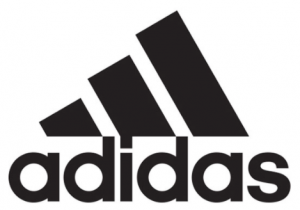


Email: trademark@beijingeastip.com
Tel: +86 10 8518 9318 | Fax: +86 10 8518 9338
Address: Suite 1601, Tower E2, Oriental Plaza, 1 East Chang An Ave., Dongcheng Dist., Beijing, 100738, P.R. China -
Top 10 Trademark Agencies in Administrative Litigation
2021-01-19Top 10 Trademark Agencies in Administrative Litigation
On January 8, 2021, Zhichanli Network Technology Co., Ltd., China’s top intellectual property media platform, published the Top 10 China Intellectual Property Agencies Rankings. Beijing East IP was ranked in the Top 10 Trademark Agencies in Administrative Litigation for the following two cases.
Case 1 – Lonely Planet is not so lonely
In February 2018, the well-known travel guides publisher Lonely Planet filed several invalidation actions against the marks “Gu Du Xing Qiu in Chinese (孤独星球)” and “Lonely Planet and Gu Du Xing Xing in Chinese (孤独行星)” in Classes 35, 41, and 42 filed by Guangxi Periodical Media Group Co., Ltd. (GPMG). The China National Intellectual Property Administration (“CNIPA”) upheld the Disputed Mark’s validity, however, through Beijing East IP’s representation, the Beijing Intellectual Property (“IP”) Court and the Beijing High Court overruled the CNIPA’s decisions and ruled in favor of Lonely Planet.
Lonely Planet’s Marks




Disputed Marks

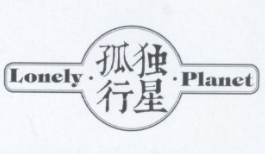
In its decision for Class 41, the Beijing IP Court first examined whether the Disputed Marks violated Article 30 of the Trademark Law of China that allows the CNIPA to reject a trademark application identical with or similar to others’ prior trademark in respect of identical or similar goods. The Beijing IP Court concluded that the Disputed Marks were remarkably similar to Lonely Planet’s Marks. Although the Disputed Mark has approved services in Class 41 for “publication of books; publication of electronic books and journals on-line; providing on-line electronic publications (not downloadable),” the court found these services were closely related to the goods “books; printed publications; magazines [periodicals]” approved for Lonely Planet’s prior marks in Class 16.The Beijing IP Court then examined whether the Disputed Mark violated Article 32 of the Trademark Law of China that states a trademark application shall not create any prejudice to the prior right of others, nor use unfair means to preemptively register the trademark of some reputation others have used. The court reasoned that Lonely Planet’s evidence proved that Lonely Planet enjoyed prior trade name right in travel guide related book and publishing services. The “Lonely Planet” trademark also constituted as an unregistered prior used mark that has obtained certain influence in the book and publishing services. Moreover, GPMG and Lonely Planet were both publishing companies, GPMG knew or should have known Lonely Planet’s trade name and prior used “Lonely Planet” trademarks. GPMG’s applications for the Disputed Marks can hardly be seen as good faith filings. The Disputed Mark shall be invalidated under Article 32 of the Trademark Law of China for infringing Lonely Planet’s prior trade name right and registering Lonely Planet’s prior used trademark that has obtain certain influence with unfair means.
On appeal, the Beijing High Court affirmed the Beijing IP Court’s above rulings. Additionally, the Beijing High Court found that the Disputed Mark’s approved services highly overlapped with television programing production services that Lonely Planet previously used with the “Lonely Planet” trademark. Likewise, the Beijing High Court found that Lonely Planet’s trade name has obtained certain fame before the Disputed Mark’s application date on television programing product services.
Takeaway:
- Where a prior used mark’s owner who claimed that another trademark applicant preemptively filed a trademark application for its prior used mark that has obtained certain influence, if the prior used mark can be proven to have obtained certain influence and that other trademark applicant knew or should have known about the prior used mark, it can be presumed that the trademark application was filed preemptively using unfair means. The court may recognize a prior used mark has obtained certain influence if the prior used mark’s owner proves that its prior used mark has been continuously used for a time period, within a region, has sales volume, or advertisements and promotions.
- Analyzing services actually offered, including the specific content, purpose, delivery method, time of use, and relevant public who may use the services are important when persuading the judge on the similarity of services between the two marks. Similarly, categorizing services into several subgroups to emphasize the similarity of the goods and services from different angles as well as the actual use of a trade name and a trademark can help to increase the chance of success.
- When proving fame and prior use of the involved trademark or trade name, evidence of third-party resources can be key. For example, when trying to prove prior use and fame in TV program producing, authoritative or state-owned media report and TV programs on video websites prior to the disputed mark’s application date are good evidence to prove the fame and prior use of the involved trademark or trade name.
Case 2 – E-VO-LON or Yi Wo Long?
In April 2015, Beijing East IP represented Freudenberg to file invalidation actions against two “Yi Wo Long in Chinese (依沃珑)” trademarks (“Disputed Marks”) owned by Nanjing Pippin Textile Technology Co., Ltd. (“Pippin”) before the Trademark Review and Adjudication Board (“TRAB”) and harvested favorable outcome for Freudenberg. Pippin, on the other end, was unsatisfied with the decisions and appealed to the Beijing Intellectual Property Court, which ruled in favor of Freudenberg as well. Pippin further appealed to the Beijing High Court and later filed petitions to the Supreme People’s Court (“SPC”), but all judgments were in favor of Freudenberg.

EVOLON 
Disputed Marks Freudenberg‘s Mark
The SPC reasoned that the Disputed Marks’ pronunciation was similar to the Cited Mark and Freudenberg submitted sufficient evidence during the proceedings before the TRAB and the lower courts to prove that “Yi Wo Long in Chinese” and “EVOLON” have established one-to-one corresponding association through Freudenberg’s promotion and use. The goods, although fell into different subclasses, were identical or similar in terms of function and use, manufacturing department, sales channel, and target consumers, thus constituted similar. The SPC also reasoned that Freudenberg’s evidence proved that the Cited Mark had obtained relatively high fame prior to the Disputed Marks’ application dates. The co-existence of the Disputed Marks and the Cited Mark was likely to cause confusion among the relevant public. Accordingly, the lower courts correctly held that the Disputed Marks and the Cited Mark were similar marks.Takeaway:
- Generally, similarity between word marks can be determined based on the composition, overall appearance, pronunciation, meaning, etc. But if two marks are in different languages, the constituent elements and the visual impression are readily distinct. Hence, similarities shall be found from the meaning and the pronunciation. For example, if the two marks involves are coined words, that is, words without defined meaning for the consumers to comprehend the goods or services offered, pronunciation of the two marks, use and fame, and one-to-one correspondence between the two marks can be used to argue similarities between the two marks. Third-party evidence found on the internet, journal articles, online media coverages, promotional materials from the relevant public, or the interested parties can be used to support the similarity claim.
- Goods similarity can be easily found when goods fall into the same subclass according to the Classification of Similar Goods and Services issued by the CNIPA based on the Nice Agreement (“CNIPA Classification”), but when goods fall into different subclasses or different subgroups, the inherent interrelation between goods in terms of function and use, manufacturing department, sales channel, and target consumers can be convincing similarity arguments. Additionally, when trying to prove the relationship between raw materials and the final products, evidence collected from academic views, public cognition, and actual product pictures can be supportive.
In addition to goods similarity, awareness of the rightsholder’s fame and reputation, the other party’s bad faith and activities that may confuse the relevant public are convincing evidence to persuade the court that although two marks are in different languages, they may still be considered similar.

Email: trademark@beijingeastip.com Tel: +86 10 8518 9318 | Fax: +86 10 8518 9338
Address: Suite 1601, Tower E2, Oriental Plaza, 1 East Chang An Ave., Dongcheng Dist., Beijing, 100738, P.R. China -
Weekly China Trademark News Updates – January 18, 2021
2021-01-18
Weekly China Trademark News Updates
January 18, 2021
1. The first instance court fined the “Supreme” mark squatter for RMB 8.5 million
On November 14, 2019, Chapter 4 Corp. (“Chapter 4”), owner of the famous “Supreme” skateboard and streetwear brand, filed an unfair competition lawsuit against Shanghai Jiao She International Trade Co., Ltd. and Zhejiang Outlet Plaza Co., Ltd. (the “Defendants”). The Zhejiang Intermediate Court found that Chapter 4’s “Supreme” brand had collaborated with Louis Vuitton, Nike, and Lacoste in China. And along with other facts that the CNIPA found, Chapter 4 was able to prove that the “Supreme” brand had been used in China. The court held that the “Supreme” mark had obtained certain influence and shall be protected under the Anti-unfair Competition Law. The court ordered the Defendants to immediately stop infringing activities, publish clarifying statements, eliminate negative impacts on the “Supreme” mark, and pay RMB 8.5 million (USD 1.3 million) to Chapter 4 for economic loss and reasonable costs.
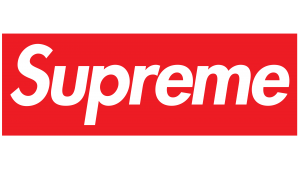 Although Chapter 4 has not yet had an exclusive Supreme store in China, the court found the “Supreme” mark and Chapter 4 established a strong association through collaborations, cross-border trading, media promotions, and celebrity endorsements prior to the alleged infringing activities and shall be legally protected. Under the Anti-Unfair Competition Law, a “mark that has obtained certain influence” can be protected prior and after the mark’s registration based on the rightsholder’s claims.
Although Chapter 4 has not yet had an exclusive Supreme store in China, the court found the “Supreme” mark and Chapter 4 established a strong association through collaborations, cross-border trading, media promotions, and celebrity endorsements prior to the alleged infringing activities and shall be legally protected. Under the Anti-Unfair Competition Law, a “mark that has obtained certain influence” can be protected prior and after the mark’s registration based on the rightsholder’s claims.2. Qiao Dan Sports renamed to Zhong Qiao Sports
On December 30, 2020, eight years after Michael Jordan the American professional basketball player filed a name dispute against Qiao Dan Sports Co., Inc. (“Qiao Dan Sports”) and Shanghai Bai Ren Trade Co., Ltd. The Shanghai Second Intermediate Court’s first instance judgement ordered Qiao Dan Sports to publish clarifying statements regarding its relationship with Michael Jordan and issue a public apology. Specifically, the court ordered Qiao Dan Sports to stop using the “Qiao Dan in Chinese (“乔丹”)” part of its corporate name and its “Qiao Dan in Chinese (“乔丹”)” trademarks within 30 days of the effective date of this judgement. On January 12, 2021, Qiao Dan Sports renamed itself to Zhong Qiao Sports Co., Ltd.


The Shanghai Second Intermediate Court, in its judgment, found Qiao Dan Sports knew of Michael Jordan’s fame but still registered or licensed the “Qiao Dan in Chinese (“乔丹”)” trademark, the “Qiao Dan in Chinese (“乔丹”) and Design (a baseball mannequin)” trademark, and the “Qiao Dan in Chinese (“乔丹”) and 23” trademark. And without authorization from Michael Jordan, Qiao Dan Sports used the “Qiao Dan in Chinese (“乔丹”)” mark that was identical with the Chinese translation of Michael Jordan’s last name in sporting goods industry and as the distinctive part of its trade name. Further, Qiao Dan Sports promoted the “Qiao Dan in Chinese (“乔丹”)” brand through cable television, celebrity endorsement, the internet, newspaper, magazine, and outdoor billboards. These business activities were sufficient to confuse the public to associate Qiao Dan Sports with Michael Jordan. Such association was also one of the reasons that led part of the consumers decided to purchase Qiao Dan Sports products. These business activities allowed Qiao Dan Sports to ride on Michael Jordan’s influence when entering the market to obtain more market opportunities and monetary interests. Qiao Dan Sports’ use of the “Qiao Dan in Chinese (“乔丹”)” mark shall be deemed as infringing upon Michael Jordan’s name right.
3. The court ordered RMB 30.55 million punitive damages for infringing Wyeth LLC’s “Hui Shi in Chinese (惠氏)” trademark and “Wyeth” trademark
On December 25, 2020, the Zhejiang Intermediate Court held that Guangzhou Hui Shi Co., Ltd., Zeying CHEN, and Xiaoshen GUANG (jointly as the “Guangzhou Hui Shi”) jointly infringed upon Wyeth LLC.’s “Hu Shi in Chinese (惠氏)” trademark and “Wyeth” trademark’s exclusive rights. Considered Guangzhou Hui Shi’s obvious subjective bad faith, the court ordered treble punitive damages according to the China Trademark Law along with reasonable costs for RMB 30.55 million (USD 4.7 million).
Guangzhou Hui Shi, in its rebuttal, responded that its six “Wyeth” and “Hui Shi in Chinese (惠氏)” trademarks were legally used prior to being invalidated by the CNIPA and shall not be seen as infringing upon Wyeth LLC.’s rights. Guangzhou Hui Shi further argued that although the CNIPA invalidated the six “Wyeth” and “Hui Shi in Chinese (惠氏)” trademarks, it had already obtained a license for the “Hui Shi Xiao Shi Zi in Chinese (惠氏小狮子)” trademark, which allowed itself to legally use the licensed trademark. The court reasoned that the exclusive trademark right for the six “Wyeth” and “Hui Shi in Chinese (惠氏)” trademarks shall be seen as to have never existed once invalidated. Hence, Guangzhou Hui Shi’s argument that it had legally used its six trademarks before the CNIPA invalidated the trademarks was invalid. As to the license agreement, the court found that the license agreement for the “Hui Shi Xiao Shi Zi in Chinese (惠氏小狮子)” trademark only showed Guangzhou Hui Shi as the general dealer for the greater China region on mother and baby related products. The license agreement omitted the trademark registration number, approved Classes, and licensed use. The license agreement was never recorded with the CNIPA. Such a license agreement cannot prove that Guangzhou Hui Shi had legally obtained a license agreement to use the “Hui Shi Xiao Shi Zi in Chinese (惠氏小狮子)” trademark. The court concluded that Wyeth LLC.’s long term promotions for the “Wyeth” and “Hui Shi in Chinese (惠氏)” trademarks had been known to the relevant public and obtained high fame. Relevant consumers were likely to be confused and believed that infringing goods labeled with identical or similar “Wyeth” or “Hui Shi in Chinese (惠氏)” marks had certain association with Wyeth LLC.
4. Another year with recorded new trademark applications and shortened examination timeIn
2020, 878 million new trademark applications were filed. The average trademark examination time has been shortened to four months. Compared with 2019, there were 6.43% more new trademark applications in 2020. With the shortened 4-month examination time, trademark registration process has also been shortened to 7 to 8 months.
5. 2020 saw a big increase in the number of trademark applications filed online
In 2020, 98.05% of the trademark applications were filed online. An increase of almost 17% from the 81.29% in 2016. The total active users in the CNIPA’s online trademark system have also increased to 178,802 users, 14 times more users than in 2016. By the end of 2020, trademark oppositions, invalidations, and three-year non-use cancelations can also be filed online.
6. The CNIPA continues making administrative trademark documents publicly available
The CNIPA has been publishing administrative judgments since 2017, there are about 900,000 decisions available up to date. By the end of 2020, more than 50 million trademark information is freely available for download on the CNIPA’s online trademark system. In 2020, the CNIPA began making trademark application refusal notifications and trademark opposition decisions publicly available through its online trademark system.

Email: trademark@beijingeastip.com
Tel: +86 10 8518 9318 | Fax: +86 10 8518 9338
Address: Suite 1601, Tower E2, Oriental Plaza, 1 East Chang An Ave., Dongcheng Dist., Beijing, 100738, P.R. China -
The Long-Awaited Fourth Amendment to the Chinese Patent Law: An In-Depth Look
2020-12-29“The revisions generally serve the proclaimed purposes of placing greater importance on and strengthening IP protection, optimizing enforcement of patent rights, increasing deterrence to infringement, and promoting patent utilization and commercialization of inventions.”
-
MS. HUI SHI’S ONLINE LECTURE FOR GERMAN CLIENTS WAS HELD SUCCESSFULLY
2020-12-16Ms. Hui Shi, senior associate of Beijing East IP Law Firm, was invited by our German clients to share some key issues on IP protection in China through an online lecture.
-
Chris was invited by the Embassy of Israeli in China to share the knowledge of intellectual property protection
2020-12-01On the November 24, 2020, Chris LIU, lawyer from Beijing East IP Law Firm was invited by the Embassy of Israeli in China to give a presentation for Israeli enterprises on China’s intellectual property protection. Chris, with her rich practical experience to vividly demonstrated the signification, application, protection and operation of IPR in an illustrated manner, and gave a simple and profound explanation of the intellectual property protection system in China.
-
Beijing East IP won all the invalidation procedures and administrative litigation procedures of the “micromotor” utility model invalidation case
2020-12-25Beijing Higher People’s Court, on December 15, 2020, issued a second-instance judgment on the invalidation of a utility model patent named “micromotor”, rejected all litigation requests of Sunonwealth Electric Machine Industry Co., LTD, and upheld the original judgment. Our patent attorneys Du Lijian, Liu Jun, and Zhang Yongyu acted for the invalidation petitioner Asia Vital Components Co., LTD to participate in the entire process of this case, got the result that all independent claims and some dependent claims invalid in National Intellectual Property Administration (NIPA), and won all administrative litigations in Beijing Intellectual Property Court and Beijing Higher People’s Court.
-
ABOUT US
-
PRACTICES
-
NEWS & EVENTS
-
Other Links
-
Contact Us
- info@beijingeastip.com
- +86 10 8518 9318
- +86 10 8518 9338


